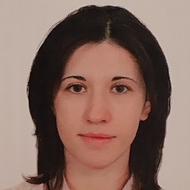- A
- A
- A
- АБB
- АБB
- АБB
- А
- А
- А
- А
- А
- Национальный исследовательский университет «Высшая школа экономики»
- Факультеты
- Факультет экономических наук
- Школа финансов
- Мероприятия
- Научный семинар "Эмпирические исследования банковской деятельности"
-
О Школе финансов
-
- Базовые кафедры компаний-партнёров
- Лаборатории
- Сотрудничество Школы финансов и ПАО "Сбербанк"
-
Образовательная деятельность
- На академических программах
- На прикладных программах
-
Проекты
-
- Проектная модель обучения 2025/2026 учебный год
- Проектная модель обучения 2024/2025 учебный год
- Проектная модель обучения 2023/2024 учебный год
- Проектная модель обучения 2022/2023 учебный год
- Проектная модель обучения 2021/2022 учебный год
- Проектная модель обучения 2020/2021 учебный год
- Первый опыт 2019/2020 учебный год
-
-
- БИЗНЕС-ОБРАЗОВАНИЕ
-
ОНЛАЙН-КУРСЫ
-
На платформе "Открытое образование"
-
- ЭКСПЕРТНЫЕ СТАТЬИ
-
Научная деятельность
- Научно-исследовательские семинары
- Аспиранты
- Journal of Corporate Finance Research
- Серия монографий для издательства Springer
- Издательства
- Сервисы Springer
- Международная конференция «ESG Corporate Dynamics: the Challenges for Emerging Capital Markets»
- Международный семинар «Системные риски в финансовом секторе»
- Ясинская (Апрельская) конференция
- Международный аспирантский семинар
- Стратегические проекты
- Патенты и результаты интеллектуальной деятельности
- Публикации преподавателей Школы финансов
- Участие преподавателей Школы финансов в конференциях
-
Центр баз данных
Школа финансов ВШЭ
119049 Москва, Покровский бульвар, 11,
офис S629.
Телефоны:
+7 (495) 772-95-90*27447, *27190, *27947 (по общим вопросам Школы финансов)
+7 (495) 621-91-92 (по вопросам Бизнес-образования)
+7 (495) 916-88-08 (Магистерская программа "Корпоративные финансы")
E-mail:
df@hse.ru (по общим вопросам Школы финансов),
finance@hse.ru (по вопросам Бизнес-образования)
ординарный профессор НИУ ВШЭ, доктор экономических наук, заслуженный работник высшей школы РФ
Школа финансов ВШЭ — лидирующий в стране центр компетенций в области корпоративных финансов, оценки стоимости, банковского дела, фондового рынка, управления рисками и страхования, учета и аудита.
Наш университет - первый в России в глобальном рейтинге "QS – World University Rankings by subject" (2022) в предметной области Accounting and Finance, а так же первый среди российских университетов в области Business & Management Studies.
Journal of Economics and Business. 2025. Vol. 136. P. 1-21.
В кн.: Российские корпорации на пути к антихрупкости. Финансовая архитектура компаний. М.: Издательский дом НИУ ВШЭ, 2025. Гл. 1. С. 15-26.
SERIES: FINANCIAL ECONOMICS. WP BRP 60/FE/2017. НИУ ВШЭ, 2025

Научный семинар "Эмпирические исследования банковской деятельности"
Доклады:
1) The Impact of Risk Governance on the Performance of OECD Banks
Докладчик: Muddassar Malik
Doctoral Candidate of D. Sc. Economics and Business Administration
University of Turku | Finland.
Abstract:
An enforcement of risk governance (hereafter RG)in banks has been observed significantly important over the past two decades. Appropriate risk governance in place is one central way to prevent significant and wide negative consequences of excessive risk taking by banks. This, in turn, substantiate stable, more foreseeable, economic development to investigate the impact of risk governance on the performance and risk-taking behavior of OECD banks. This research proposes to study various elements of risk governance. It covers the research gaps in the dearth of literature on risk governance which has been observed significant in financial turmoil. Risk governance involves an identification, assessment, management and communication of risk. Within this research two major functions of risk governance are studied which are Chief Risk Officer (hereafter CRO)and Risk Committee (hereafter RC). A detailed analysis of various characteristics of CRO and RCwill be carried out along with their impact on the performance. CRO and RC are the functions of RG where an interactive research of these two functions have been absent in extant literature. To have RC in a bank is essential for introduction, development, and execution of risk policies and diagnostics. Concurrently, a CRO is exclusive to steer RC and risk related matters. In an empirical research, several aspects of CRO such as qualifications, experiences, age, gender, size, independence and characteristics of RC will be considered. Initially four hypotheses will be derived to test these characteristics. Most of the related data will be handpicked. Risk governance regulations vary accordingly from country to country, hence, to standardize the RG regulations across OECD a reference framework of International Risk Governance Council (IRGC) will be utilized. Some of the variables will be obtained through CRSP, COMPUSTAT, Thomson Reuters and Datastream where access to these sources is available. In analyses, descriptive statistics, correlation analysis and regressions will be employed. As the number of banks is fixed therefore “Time Series” method will be utilized and if it is not enough then pooled data will be considered. The objective of correlation analysis is to see any relationship between variables as to avoid any errors in regressions. For clear understanding of the impact of risk governance on banks’ performance robust measures which are widely applied methods from extant literature such as Tobin’s Q, ROA, and Buy-and-Hold Stock Returns are considered. For risk taking behavior Leverage, σ (ROA), Z-Score, Non-Performing Loans to Gross Loans, and Systematic Risk (Beta) will be employed. An outcome of this research will contribute to the scant academic knowledge. Besides that, the outcome has potential to contribute to regulators and managers especially in their risk-related tasks.
2) Increase of Banks’ Credit Risks Forecasting Power by the Usage of the Set of Credit Ratings and Probability of Default Models
Докладчик: Ella Khromova
PhD candidate at National Research University Higher School of Economics
Abstract:
The aim of the paper is twofold: first, to compare divergence of credit ratings (CR) and probability of defaults (PD) models of Russian banks, second, to create a synergic reliable model. The research showed that there is a significant divergence in the predictions of CR and PD models: CR models tend to overestimate the probability of financial disease of a bank, whereas PD models provide underestimated results. Moreover, the paper introduces the process of derivation of a single scale CR and PD econometric models for Russian banks based on 2007-2018 database. The usage of the synergic model of CR and PD has improved banks’ credit risks forecasting power, comparing to the separate CR model. As a result, percentage of predictions which fall in the one-point interval near the actual value increased by more than 15%, while percentage of forecasts with less than three rating grades deviation in a 21-grades rating scale reached 88%
При необходимости заказа пропуска в здание НИУ ВШЭ, просьба до 20:00 18 мая направить заявку на e-mail: df@hse.ru, (в копию: semyashkin-efim@mail.ru) указав в теме сообщения «заказ пропуска на НИС Эмпирические исследования банковской деятельности» и сообщив свою фамилию, имя, отчество и название организации.
Школа финансов,
НИУ ВШЭ
+8(495) 772-95-90*АТС 26003
Карминский Александр Маркович
Школа финансов: Профессор-исследователь
- О ВЫШКЕ
- Цифры и факты
- Руководство и структура
- Устойчивое развитие в НИУ ВШЭ
- Преподаватели и сотрудники
- Корпуса и общежития
- Закупки
- Обращения граждан в НИУ ВШЭ
- Фонд целевого капитала
- Противодействие коррупции
- Сведения о доходах, расходах, об имуществе и обязательствах имущественного характера
- Сведения об образовательной организации
- Людям с ограниченными возможностями здоровья
- Единая платежная страница
- Работа в Вышке
- ОБРАЗОВАНИЕ
- Лицей
- Довузовская подготовка
- Олимпиады
- Прием в бакалавриат
- Вышка+
- Прием в магистратуру
- Аспирантура
- Дополнительное образование
- Центр развития карьеры
- Бизнес-инкубатор ВШЭ
- Образовательные партнерства
- Обратная связь и взаимодействие с получателями услуг
-
http://www.minobrnauki.gov.ru/
Министерство науки и высшего образования РФ
-
https://edu.gov.ru/
Министерство просвещения РФ
-
http://www.edu.ru
Федеральный портал «Российское образование»
-
https://elearning.hse.ru/mooc
Массовые открытые онлайн-курсы
- © НИУ ВШЭ 1993–2026 Адреса и контакты Условия использования материалов Политика конфиденциальности Карта сайта
- Редактору




